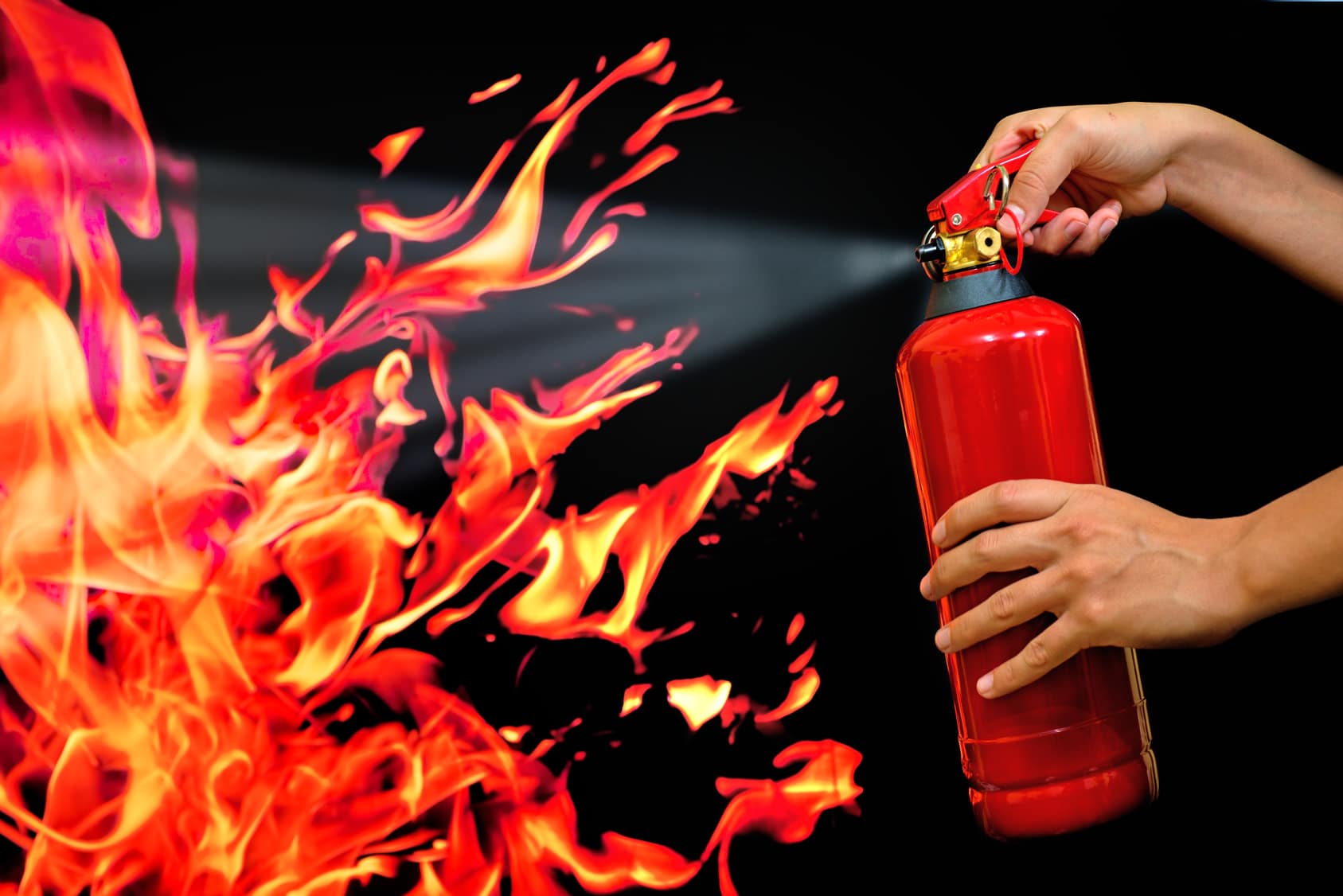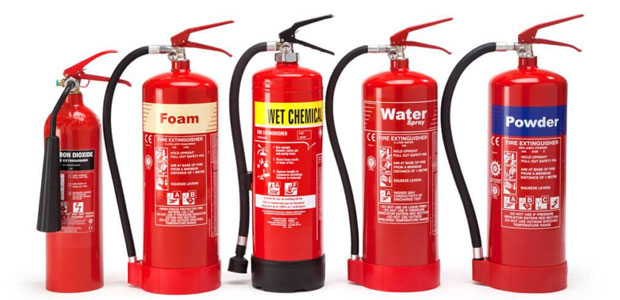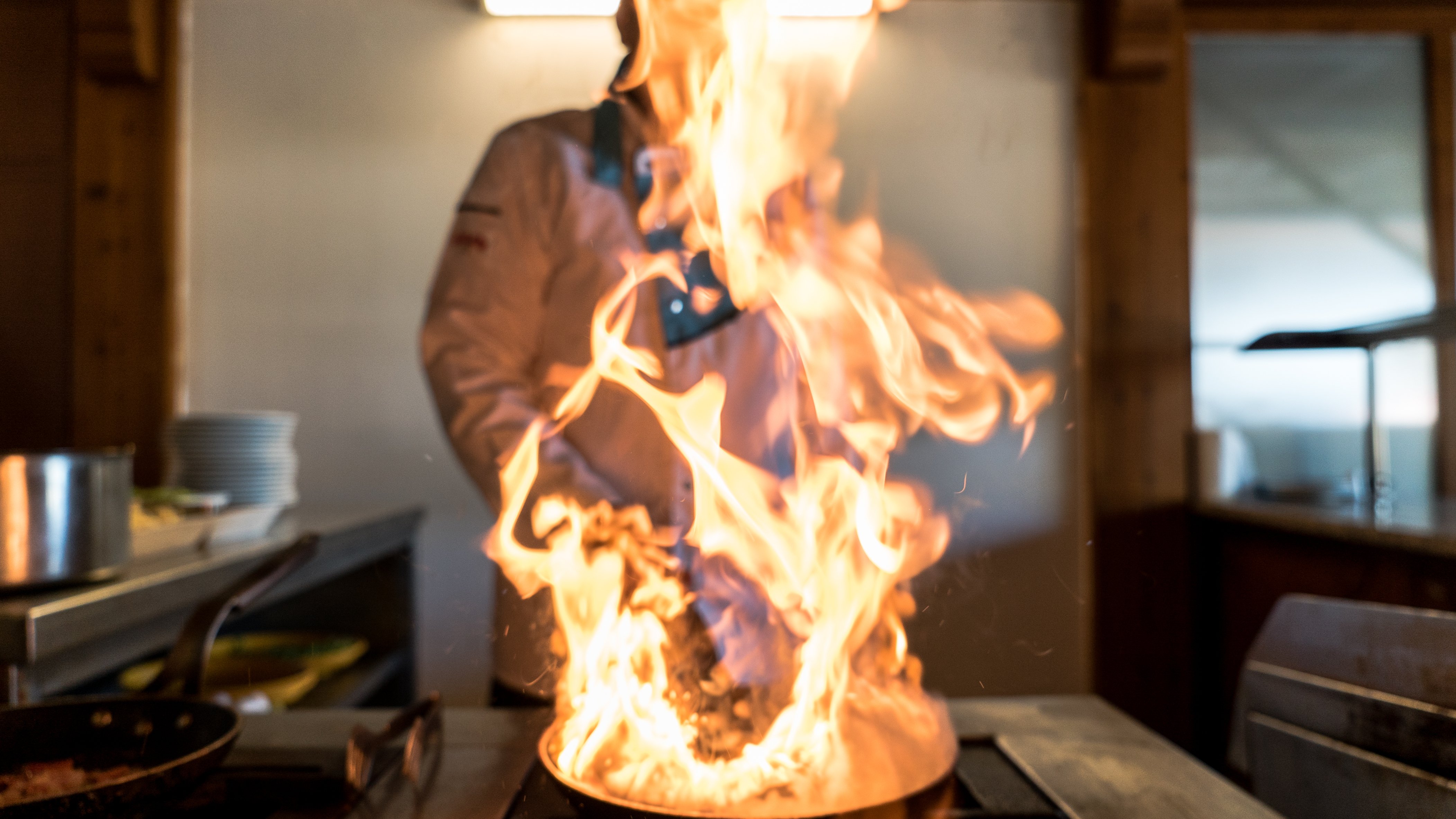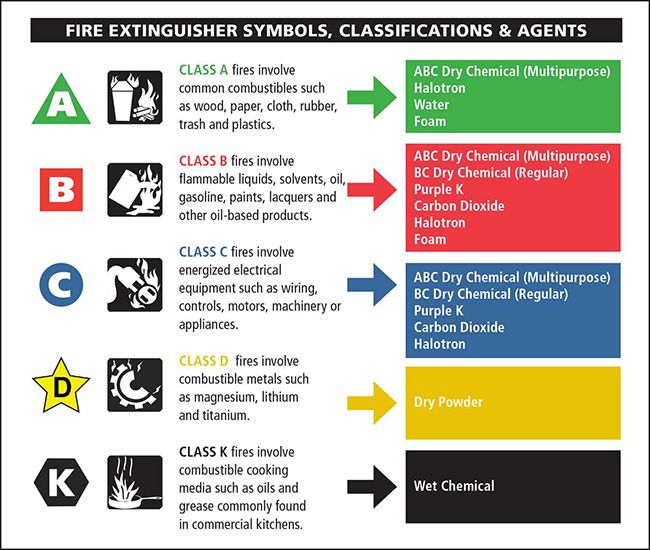class k fires can be extinguished by
Can fight fires upto 20 feet distance and lasts for 25 minutes. Class A fires are usually extinguished with water or mono ammonium phosphate.

Classes Of Fire An In Depth Look At Fire Prevention
Class K fires can only be extinguished with Class K extinguishers and should never be sprayed with water as this can increase the spread of the cooking liquids.

. Technically a type of liquid fire Class K fires are distinct enough to warrant their own classification. Extinguishers with a D rating are designed to extinguish fires involving combustible metals. If you have a metal fire the best way to put this out is to use a dry powder extinguisher only.
Specialty areas such as the Operating Rooms and Kitchens have specific extinguishers. Water does not extinguish Class B fires and can spread the flammable liquid making it worse. Dry powder agents work by smothering and heat absorption.
To extinguish a Class D fire use a dry powder agent. If you have a house fire this is most likely the type of fire you will encounter as trash paper or plastic may have caused it. Soybean has the lowest autoignition.
New vegetable shortening D. Class K A Class K fire is defined as a cooking fire involving combustion from liquids used in food preparation. The wrong type of extinguisher could cause electrical shock explosion or spread the fire.
This type of fire is the most common including everyday combustibles such as wood paper trash plastic cloth and rubber. Once a metal ignites do not use water in an attempt to extinguish it. The auto ignition points for canola soybean and olive oils are all in the range of 400 to 435 C.
Class A fires involve solid materials such as wood clothing paper and plastic. Only use a Dry Powder extinguishing agent. Water Makes Grease Fires Worse.
Class K extinguishers are filled with a mixture of potassium based chemicals that mix in with cooking grease and create a blanket that not only cools the liquid but also blocks oxygen thereby extinguishing the fire. This absorbs the heat the fire requires to burn and smothers it as well. Cooking Oils andor Fats These fires are most commonly kitchen fires as they involve cooking oils.
It is important to use the right type of extinguisher on the specific class of fire to avoid personal injury or damage to property. Class D fires involve combustible metals such as magnesium titanium and sodium. Which type of fire Cannot be extinguished by water.
Dry and Wet Agents to Extinguish Class K Fires A Class K fire extinguisher uses a fine wet mist consisting of an alkaline mixture such as potassium acetate potassium carbonate or potassium citrate that forms a soapy foam as it is applied to the cooking oil or other substance quenching the steam vapors and the fires risk of re-ignition. Does water make fire worse. New vegetable shortening OTHER SETS BY THIS CREATOR Chapter 15 Shock and Resuscitaon 88 terms tino1208 NREMT 306 terms tino1208 NREMT.
Extinguishes the fire by displacing oxygen. Fire extinguishers are classified as types A ABC BC or K. The basic methods for extinguishing a fire are to suffocate it by ensuring that it cannot have access to oxygen to cool it with a liquid such as water which reduces the heat or finally to remove the fuel or oxygen source effectively removing one of the three elements of fire.
Do I need a Class K extinguisher. Common extinguishing agents may react with a combustible metal fire causing the severity of the fire to increase. Pure creamery butter C.
Is Your Kitchen Prepared For The Worst. You must only put out these fires with powder foam or carbon dioxide extinguishers to cut off the fires oxygen. Class K Fires are fires that involve cooking oils grease or animal fat and can be extinguished using wet chemical the typical agent found in kitchen fire extinguishers.
Rendered pig fat lard D. Class K wet chemical fire extinguishers help to reduce the temperature of the oil to below its auto ignition point. Water or foam extinguishers will cause these kinds of fires to get worse so be on your guard.
Every commercial kitchen should have a Class K extinguisher to supplement the suppression system. Dont ever try to extinguish Class K fires with water as itll only make things worse. The most common method for extinguishing.
The fuel used in establishing ratings for class K extinguishers must be oil with an anti foaming agent or. Class K Class K Fires are fires that involve cooking oils grease or animal fat and can be extinguished using Purple K the typical agent found in kitchen or galley extinguishers. Class k fires can be extinguished by Tuesday May 10 2022 Class B fires that can be extinguished with a carbon dioxide extinguisher include flammable liquids and gases solvents oil greases excluding cooking oilsgreases tars oil-based paints and lacquers.
Up to 24 cash back Class A fires can be extinguished with water.

Class K Type Fire Extinguisher
What Are The 5 Different Classes Of Fire And What Type Of Extinguisher Can Safely Be Used On Each Quora

Everything You Need To Know About A Class K Fire Extinguisher

The 5 Classes Of Fire And How To Extinguish Them

The Abcs Ds And Ks Of Fire Extinguishers Occupational Health Safety

What Is A Class K Fire Extinguisher Used For

The Five Classes Of Fires Fire Extinguishers That Stop Them Strike First

China Class K Fire Extinguisher For Kitchen Fire China Stick Type Cooking Oil Pan Fire Extinguishers Stick Pack Cooking Oil Pan Fire Extinguishers

What Is A Class K Fire Extinguisher Used For

Types Of Fires Kidde Fire Safety

Which Fire Extinguisher Is Used For Kitchen Fires Other Than Those Caused By Wet Chemicals Quora

Fire Extinguishers Environmental Health And Safety

Abcs Of Fire Extinguishers Fire Prevention Services The University Of Texas At Austin

Learn About Portable Fire Extinguishers Fire Safety Learning Center

Everything You Need To Know About A Class K Fire Extinguisher

Extinguish Or Evacuate The 5 Types Of Fire And How To Respond

